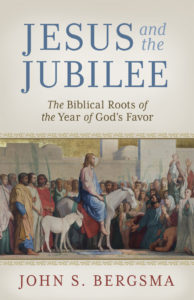By Clement Harrold

For believers who take the Word of God seriously, the near-deafening silence on the part of the four evangelists about the so-called “hidden years” of Jesus—those thirty or so years between His birth and the beginning of His ministry—can be a source of disappointment.
Wouldn’t it be exciting to hear some anecdotes about the Holy Family’s beach vacation on the Sea of Galilee? And wouldn’t young people benefit from a stirring tale of Jesus’s devotion to prayer and virtue during his adolescence? These are fair questions, yet for some reason the Holy Spirit didn’t see it that way. Why might that be?
As far as we can tell, the underlying reason why the Gospels are largely silent about Jesus’s childhood and adolescence is to underscore the normality and humility with which the Holy Family lived their life together. In the words of the Catechism of the Catholic Church, “During the greater part of his life Jesus shared the condition of the vast majority of human beings: a daily life spent without evident greatness, a life of manual labor” (§531).
What the hidden years disclose, therefore, is the true depth and radicality of the Incarnation. In a sense, Shakespeare got it right when he suggested that there are times when silence is “the perfectest herald.” Sometimes silence speaks louder than words.
The Holy Family’s silent years unveil to us a God who not only took on our lowly human flesh, but who even condescended to become an obscure “nobody” for three decades. Via the hidden years in Nazareth, Jesus fully entered into and engaged with our humanity, and in doing so He elevated our own work, our own routine, our own humdrum, our own ordinariness. St. José María Escrivá, the founder of Opus Dei, described Jesus’s upbringing in these terms:
Our Lord’s whole life fills me with love for him, but I have a special weakness for his thirty hidden years spent in Bethlehem, Egypt and Nazareth. That period, so long in comparison with his public life and which the Gospels hardly mention, might seem empty of any special meaning to a person who views it superficially. And yet, I have always maintained that this silence about Our Lord’s early life speaks eloquently for itself, and contains a wonderful lesson for us Christians. They were years of intense work and prayer, years during which Jesus led an ordinary life, a life like ours, we might say, which was both divine and human at the same time. In his simple workshop, unnoticed, he did everything to perfection, just as he was later to do before the multitudes.
The awesome truth of Christianity is that the almighty, everliving God has taken on our ordinariness and sanctified it, turning it into a source of grace.
Perhaps, then, a clue to understanding the hidden years can be found in the singular episode which interrupts them, namely, the finding of Jesus in the Temple. When the 12 year-old Jesus is finally discovered and the family returns to Nazareth, St. Luke adds the comment that “Jesus increased in wisdom and in stature, and in favor with God and man” (Lk 2:52).
In a beautiful way, this Lukan verse unpacks for us that old scholastic maxim: grace perfects nature. God doesn’t obliterate our nature and then build something in its place; rather, He takes our nature as it is, and He baptizes and transforms it. We see something similar in the figure of Christ. For thirty years, He attended to His human nature through eating, drinking, sleeping, toiling, playing sports, socializing, studying, praying, and going to the bathroom. He continually refined His body and His mind, offering us an example of what it makes to be fully human and fully alive.
As Christians, then, we should remember that we aren’t called to be head-in-the-sky mystics who pay no heed to mundane, everyday things. On the contrary, all of us—including the mystics—are called to recognize the goodness in the creation, and the capacity for grace to instill within our hearts the ability to carry out not just the spiritual works of mercy, but the corporal works as well.
It is for good reason that it is Christians who have painted the most beautiful artwork in history, composed the most exquisite music, written the most elegant novels, built the most magnificent buildings, written the best legal codes, and founded the world’s first hospitals. Christians do all these things and more because we understand that grace perfects nature, and that God became man.
So while we may wish that the Gospels had included more stories about Jesus’s childhood, in the end we can see something profound in the divine pedagogy lying behind those beautiful hidden years of Christ. They reveal to us how fully the divine entered into our humanity, and by extension, how fully we are invited to divinize our lives, our bodies, and the world in which we live.
Clement Harrold earned his master’s degree in theology from the University of Notre Dame in 2024, and his bachelor’s from Franciscan University of Steubenville in 2021. His writings have appeared in First Things, Church Life Journal, Crisis Magazine, and the Washington Examiner.
You Might Also Like
Jubilee means joy—a joy that’s not fleeting, a joy that lasts.
In biblical times, a jubilee was a time to rejoice. And this is still the case when the Church announces a jubilee.
In Jesus and the Jubilee, biblical scholar John Bergsma gets to the roots of the jubilee, showing how this practice was established in order to preserve freedom, family, and the fullness of God’s blessing for the ancient Israelites.
But what the Israelites were promised by God—and experienced partially—was truly fulfilled by Jesus. As Jesus and the Jubilee reveals, the Catholic Church is the perpetual jubilee, offering redemption, release from spiritual bondage, return to our true home and family, and rest in God’s fullness.
Discover how the jubilee is the very center of Jesus’s mission and how we can fully participate in this ongoing “year of favor.”










